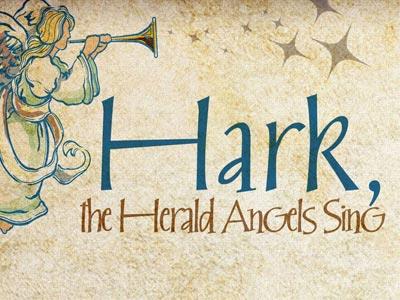-
God's Grace.
Contributed by Dr. Jerry Morrissey on Nov 28, 2017 (message contributor)
Summary: Year C. 4th Sunday of Advent
Year C. 4th Sunday of Advent
December 24, 2000
Lord of the Lake Lutheran Church
The Rev. Jerry Morrissey, Esq., Pastor
Heavenly Father, thank you for your unexpected grace and the Word of promise that we have inherited eternal life because of your Son. Amen.
Title: “God’s Grace.” Luke 1: 39-45 [46-55]
Mary, pregnant herself, visits the pregnant Elizabeth to help her deliver John the Baptist.
Both Matthew and Luke depend on Mark for much of their information about Jesus. They pretty much follow his schema of Jesus, an adult, baptized by John, preaching first in Galilee, the north, and then in Jerusalem, the south, where he is put to death. However, both Matthew and Luke add two chapters to the beginning of the story as Mark tells it. We call these introductions “Infancy Narratives,” for the want of a better term. They both draw on traditional stories about the birth of Jesus that circulated at the time among Christians. While not inconsistent with each other, they are not exactly the same and the differing details demonstrate they are not straight history. They are primarily meant to edify Christians by telescoping the entire gospel message into the infancy and early childhood period of Jesus. They are based on rather stereotyped Old Testament patterns of great births recast to fit each evangelist’s purpose. Matthew tells the story from Joseph’s point of view using the dream pattern of telling of great births. The annunciation is to Joseph in a dream. He is informed in a dream to go to Egypt. Luke tells the story from Mary’s point of view using the Old Testament birth announcement pattern. He does this for both John and Jesus and links these two stories by telling the story of the visitation of Mary to Elizabeth, our gospel reading for today. Without this story the two births would be parallel but unrelated.
Luke demonstrates his great ability to compress a lot of theology into a verbal picture of a down-home, rather folksy scene. He turns a rather ordinary visit of two pregnant relatives, one to help the other give birth, into a lesson on the relationship of the Old Testament with the New Testament. Elizabeth, a woman, and John, there, but not visible, represent the Old Testament. Older, long-in-waiting for the Messiah, pious, one of the ‘anawim, the “remnant” joyfully greets the new kid on the block, not-quite-born, yet alive, recognizing him for who and what he is – the One Who is to Come for his “official visit,” Parousia, younger, yet greater than John and the Old Testament, yet related as a cousin. Mary represents the Church, carrying within her the Messiah and Lord, respectful of the old, yet delivering someone and something far superior, delivering it with joy, for the salvation of all. As such, she, the Church, brings to completion, helps to deliver, the best of the old, John is, according to Jesus, the greatest of those born among men and women because it the Old Testament prepared for the new. This is a friendly passing of the torch among cousins, not a hostile take over. Like John himself, this story functions as a bridge, teaching Christians and Jews alike the relationship between the Old Testament and New Testament.
In verse 39 Mary set out: When Gabriel told Mary about Elizabeth’s pregnancy, he put the bug in her ear to go and help her. Luke makes a subtle point that the Word we receive, even when it concerns us, also has implications for our service to others.
To a town of Judah: No precise location of Elizabeth’s house is given, but it is clear that they are country folk living three or four days journey about 80-100 miles from Nazareth.
In verse 41 when Elizabeth heard…the baby leaped: On one level this uterine reaction can be explained as rather normal. A pregnant woman easily transfers her emotional reactions to the fetus. However, on the deeper level, it means that John was quickened, enlivened, empowered, “filled with the Holy Spirit” even from his mother’s womb according to Psalm 139:13 which reads, “For you created my inmost being; you knit me together in my mother’s womb.” John was quickened by Christ, the one for whom he would exercise his mission. Jesus is the source of John the Baptist power and the one who commissions John’ to foretell events about Jesus by Jesus divine inspiration. We, too, who met Christ in Baptism as infants received the same power without realizing it.
In verse 42, “cried out in a loud voice”: This signifies excitement, joyful praise, or inspired utterance. Elizabeth gives verbal expression to the meaning of her inner experience. She interpreted the physical facts with faith. This is the meaning of “filled with the Holy Spirit.” Inspired, she saw it as an expression of her baby’s joy and knew what happened to Mary without having to be told. By what was going on within her, she was able to see into Mary’s situation. Most blessed are you among women: This is a Semitic way of saying, ”Of all women you are the most blessed.” The word “blessed” (Gk eulogete) translates the Hb barak. It pertains to earthly bliss, God’s favor to humans shown in material and social gifts to them. The word is also used by humans to “bless” God in the sense of praising him for bestowing those gifts. Elizabeth uses this word twice in this verse; also “blessed is the fruit of your womb”. She is referring at this point to the “this worldly” evaluation of the event, Mary’s “claim to fame.”

 Sermon Central
Sermon Central



